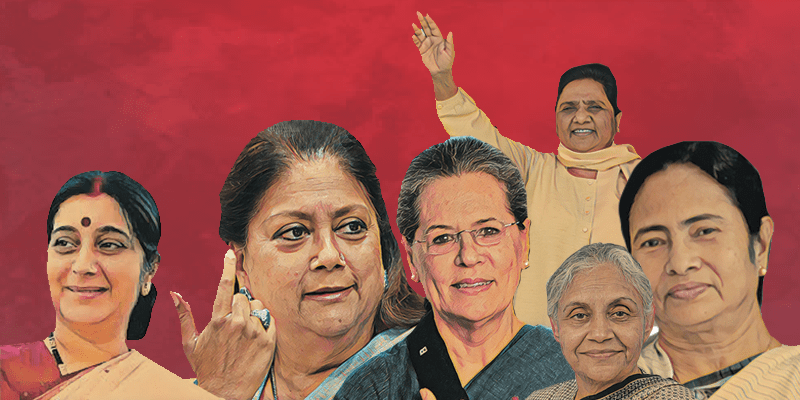Shikhar Gupta
According to Inter Parliamentary Union and UN Women’s office, India ranks 148th in terms of Women participation in Executive Government and Parliament. The Women make up only 11.8% of the total 542 seats in Lok Sabha (64 MPs) and 11% in Rajya Sabha (27 MPs). The European countries stand at 22.5%, America at 25% and Nordic countries at 43.5%.
These developments show that progress in gender equality remains slow in all structures of powers and decision making. Power still vests in the hands of men and especially in Indian context which claims itself to be largest democracy in the world but lacks behind from even some Islamic nations whose reputation is not good when seen in the context of providing women rights, for example, UAE.
“Equal representation in power is a fundamental precondition to truly effective and accountable democracy” – Martin Chungong, IPU Secretary.
In the subcontinent, India lacks even behind Bangladesh and Pakistan. The average representation of women is 22% around the world which poses serious questions within the existing political framework. Representation of women in state assemblies is even worse at mere 9%. Among the eight SAARC nations, India ranks ignominious at 5th falling behind Nepal, Afghanistan, Pakistan and Bangladesh. India’s position among BRICS nation won’t provide you with any solace either as it stands at 4th.
If we could glance the other countries and try to figure out what they are doing right is when we are fetched with the fact that almost all the countries have constitutionally mandated quotas for women. Rwanda has 30% reservation policy which makes its total women representation stand roughly at 64% highest among all the nations. Our neighbors Nepal and Afghanistan have 29% and 28% reservation policy respectively. However, India doesn’t need to look far for inspiration. India by 73rd and 74th Amendment in 1994 introduced 33% women representation at Panchayati Raj Level. What this has done is pushed women participation beyond that 50% threshold and serves as a great case study to be implemented at national level.
The reason why the Women’s Representation Bill is not being passed is pretty obvious. Passing of bill would mean that the male contenders won’t be able to stand for election on one-third of total seats. Which seats will constitute the one-third part will be decided by draw of lots (as per the bill). This means that the constituency where males dominate and have majority chances of winning can come under the umbrella of reserved constituency. Hence, we don’t see this prospectus getting changed any time sooner since Indian political framework is inclined by selfish needs than by patriotic desires.
Even if the following bill gets passed it will cast some negative shadows as those seats might be reserved which are dominated by goons who thrive on such political support. One of the alternatives is to increase the seats by one-third and reserve the increased seats. Parliamentarians argue that there is no space for more seats. It seems quite absurd to hear since infrastructure should not be the reason to avoid rights and representation of almost 50% of India’s population. Parliament is for people while people are not for the Parliament.
However, how well and effectively this idea can be implemented remains a challenge. Before 1976, we used to have delimitation committee which used to distribute Lok Sabha seats among the states. But the practice was discontinued with 543 seats fixed as per 1971 census. This was done in the light of population explosion in our country and industrialization. From 1976 to 2000 India witnessed significant changes in its form and nature. Population greatly increased in all states, migration happened to metropolitans but our constituency structure remained the same. Now it is proposed to be changed. We can have the delimitation committee set up before the General Election and divide the constituency based on 2011 census and carve out those one-third required seats.
The current BJP government has the requisite majority and their howls and cries for women empowerment can be stamped as genuine if they succeed to pass this bill which affects the entire nation and not just the women. The violence and crime against women are ever increasing, so it becomes imperative to have a group of women who can take this up in the Indian Parliament. But besides the violence issue, it is pertinent that women are heard on all policy issues facing this nation, as they will be able to provide a fresh perspective and lend their voices which are often neglected in important decision making. The women in India should get an opportunity to represent their ideas in the highest platform provides by the Constitution.
“To all the little girls who are watching, never doubt that you are valuable and powerful and deserving of every chance and opportunity in this world to pursue and achieve your own dreams.”– Hillary Clinton.


